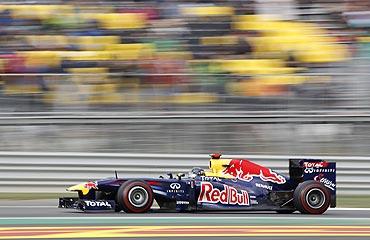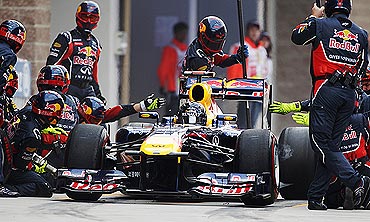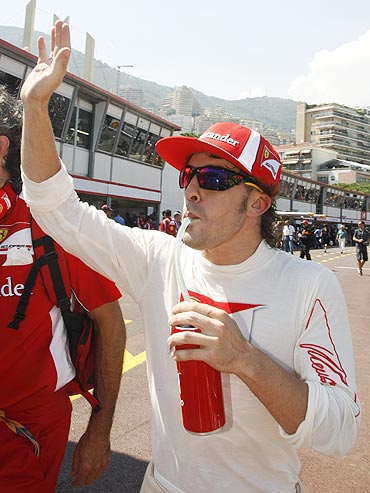 | « Back to article | Print this article |
Know more: Mechanics and technology involved in an F1 car
Have you ever had questions about the working and mechanisms of a Formula One car?
Ever wondered how different is the engine of an F1 car from that of an ordinary one? On which fuel do F1 cars run? How long can the tyre of an F1 car last?
As the country sets itself for a grand entry into the high profile and glamorous world of Formula One, here is a guide to some interesting facts -- a combination of information and rules about the sport.
Revving to a limited 18,000 RPM (Rotation per minute), a modern F1 engine consumes about 450 litres of air every second with race fuel consumption of around 75 litre per 100 km.
Such massive speed means that accelerative force on the pistons is more than 8000 times of gravity.
As per the rules, each car can use eight engines per season. And if the rule is broken, the driver gets a 10 place grid penalty. As far as gearboxes are concerned, each car can use one gearbox to a maximum of four races.
Fuel used in F1 is similar to the one used for regular cars
Formula One's parent body, The Federation Internationale de l'Automobile (FIA) has also imposed a freeze on engine development, which means that teams are unable to alter the fundamentals of their engines' design.
Talking about the fuel, its composition is actually quite close to the composition of ordinary, commercially available petrol.
In old times, though, the cars ran on a mixture of powerful chemicals and additives that contained large quantities of benzene, alcohol and aviation fuel. Some early fuels were so potent that the car's engine had to be disassembled and washed in ordinary petrol at the end of the race to prevent the mixture from corroding it.
The modern fuel is only allowed tiny quantities of 'non hydrocarbon' compounds, effectively banning the most volatile power-boosting additives.
The fuel -- available in 50 different blends – can be different for different races as per the nature and demands of the track and weather conditions.
During one F1 season, a team approximately uses over 200,000 litres of fuel for testing and racing.
F1 tyre is designed to last for 200 kilometres
Talking about the tyre, an ordinary car tyre can last 16,000 kilometres or little more and a F1 tyre is designed to last for, at most, 200 kilometres.
The emphasis, like everything else in a F1 car, is to make it as light and strong as possible. An underlying nylon and polyester structure in a complicated weave pattern is designed to withstand far larger forces than road car tyres.
Each team travels about 160,000 kilometres in a season between races and test sessions.
The F1 drivers can lose up to three kilos of weight after a race due to extreme heat in his cockpit. Hence, the drivers take in large amounts of water before the race, even if they do not feel thirsty, to avoid dehydration through sweating.
Diet of F1 drivers similar to that of track and field athletes
Most F1 drivers consume a diet similar to that of track and field athletes, carefully regulating the amount of carbohydrate and protein they absorb. During race weekends most drivers could be seen eating pasta or other carbohydrate-rich foods to gain energy and stamina.
The F1 cars use carbon fibre composite brake discs which save weight and are able to operate at higher temperatures than steel discs. One disc weighs about 1.5 kg. The discs are capable of running at vast temperatures -- anything up to 750 degrees celsius.
A Formula One car takes less distance to stop from 160 km/h than a road car uses to stop from 100 km/h.
During the first phase of qualifying, any driver who fails to set a lap within 107 percent of the fastest Q1 time will not be allowed to start the race.
However, in exceptional circumstances, which could include a driver setting a suitable time during practice, the stewards may permit the car to start.



